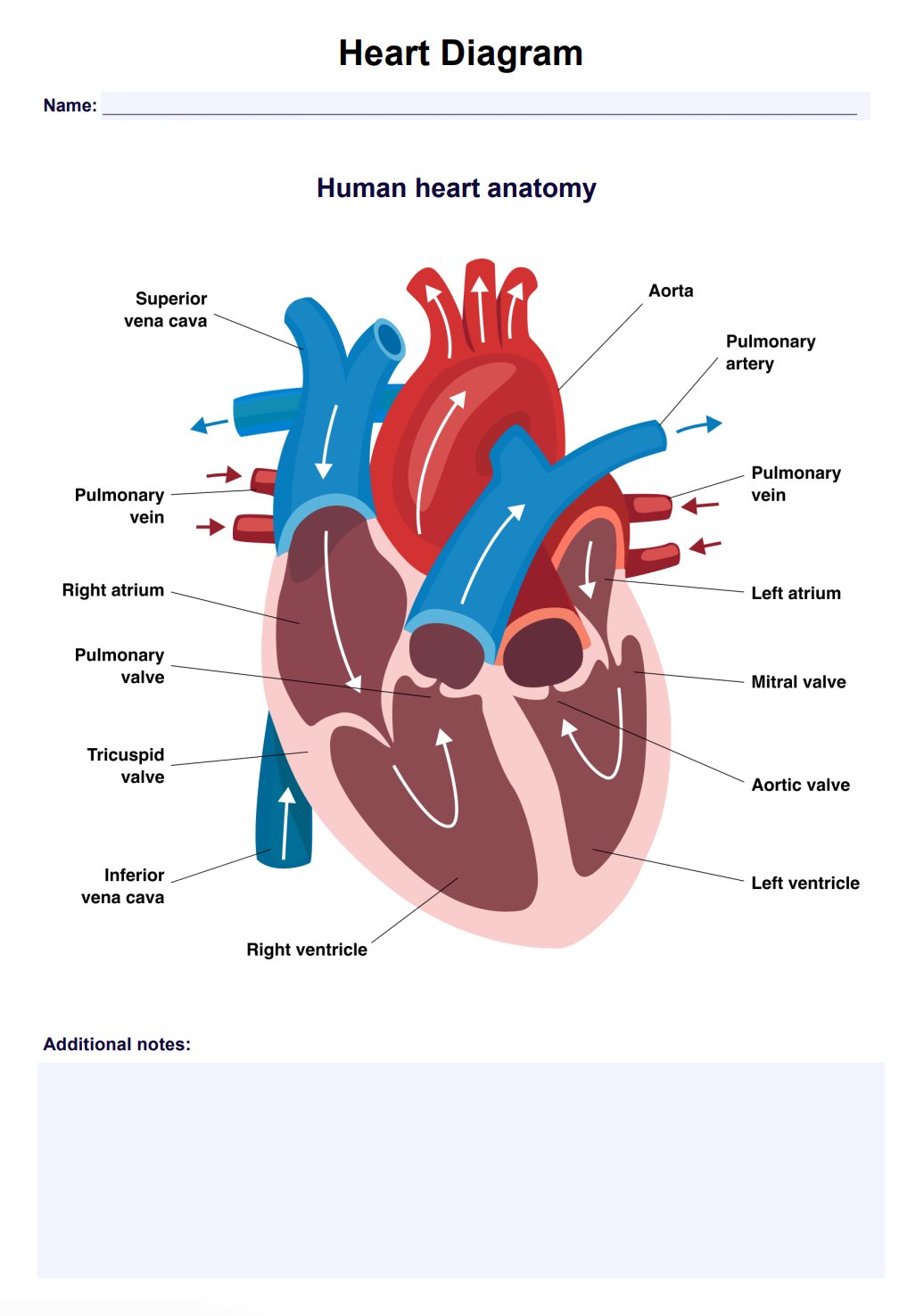Heart Diagrams are valuable tools for studying anatomy. They visually represent the complex structure of the heart, illustrating the position and relationships of its various components, such as chambers, valves, and major blood vessels. This aids learners in understanding the heart's three-dimensional nature and functions.

Heart Diagram
Be better prepared for a last-minute exam or easily explain anatomy for your patients with our free Heart Diagram template.
Heart Diagram Template
Commonly asked questions
In a clinical setting, Heart Diagrams serve as effective communication aids between healthcare professionals and patients. They help explain medical conditions, treatment plans, and surgical procedures related to the cardiovascular system. They enhance patient education and facilitate clearer discussions about cardiac health.
Yes, there are different Heart Diagrams, ranging from simple illustrations for educational purposes to more detailed diagrams used in medical textbooks or presentations. Some diagrams focus on specific aspects, such as blood flow or cardiac conduction, providing targeted insights into different facets of heart anatomy and function.
EHR and practice management software
Get started for free
*No credit card required
Free
$0/usd
Unlimited clients
Telehealth
1GB of storage
Client portal text
Automated billing and online payments











